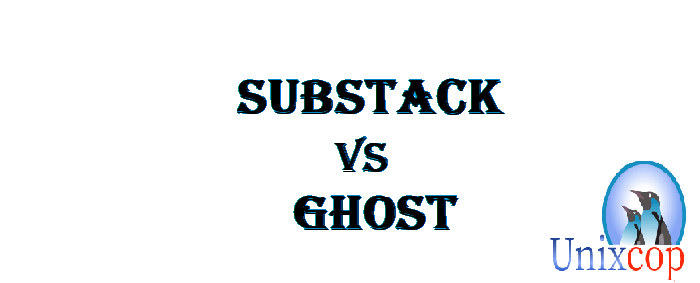This post is about Substack vs. Ghost. Welcome!!
With numerous content management systems (CMSs) available, it can be challenging to choose the best one. If you’re an independent writer or blogger and looking to start your website, two of the most popular solutions are; Ghost and Substack. The article will give you an overview of what Ghost and Substack offer and compare the pros and cons of each platform so you can make an informed decision on which one to choose.
Many bloggers and business owners have decided to go with Ghost because of its clean design and intuitive functionality, but there are alternatives worth considering before settling on the platform that’s right for you.
The Basics
Substack was developed in 2017 as an alternative to Ghost. It is an online hosted platform. It offers various services including publishing, designing and paid subscriptions to support newsletters. With this platform, the writers can send newsletters to their subscribers easily. All you have to do is sign up and start writing. Also, many of the Substack posts can be read for free. It is the choice of the content creators. They can choose to display their work either for free or place it behind a paywall. Although it is free to use, it charges some amount for paid subscriptions.
On the other hand, Ghost is a free, open-source platform which is almost similar to WordPress. It is software that you can install on your web hosting. Ghost offers an upgraded version, known as Ghost Pro, in which the user does not have to deal with the technicalities, and the Ghost team will handle everything.
Now that you know what Substack and Ghost are. Let us analyze how their features make both blogging platforms different from each other.
Substack vs. Ghost – Features
Setup & User Experience
Substack is really easy to get started with. You just have to register yourself for an account. Once you have signed up, you can start writing newsletters on the dashboard. It is very easy to use, as when you publish content, you can filter your recipients based on paid, free, or all subscribers.
Ghost, however, requires you to have technical knowledge because it is open-source software that needs to be installed on your web hosting. Well, that is for the people who want to use this platform for free. However, if you are not aware of the technical know-how, then you can upgrade to Ghost Pro, in which you can delegate the task of handling all the technical tasks to their team.
Finally, in terms of setting up substack is in a win-win situation because of its easy setup and easy-to-use dashboard compared with Ghost.
Pricing
Substack is a free tool, where you can register, sign up and start writing for free. The good news is that you do not have to pay anything to Substack to publish free content.
However, Substack starts to charge money only when you accept paying subscribers. It charges 10% of all the subscription amount that you earn. That’s fair enough!
On the other hand, to use Ghost, you will have to pay an upfront fee to get started. But the good news is that it charges regular fees, and you don’t have to pay regular commissions like you do when you use Substack.
The price that you pay to use Ghost depends upon the version and plan you want to use. There are 4 different kinds of plans;
- Starter
- Basic
- Standard
- Business
Each plan offers a different set of features. You can choose a plan according to your requirements.
In a nutshell, both Substack and Ghost are two different blogging platforms that are specialized in offering different services. It completely depends upon you and your requirements to choose the one that suits your requirements better.



